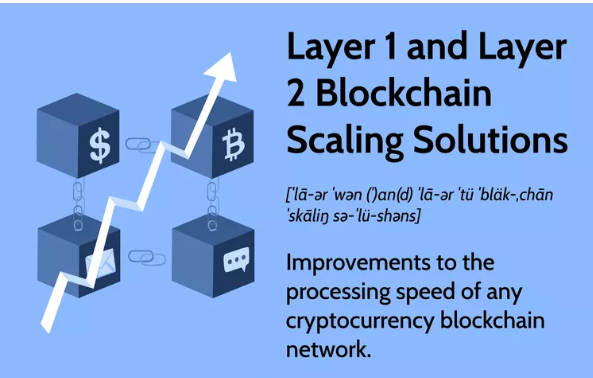Layer 1 vs. Layer 2 Solutions: What’s the Difference?
As blockchain adoption continues to grow, so does the need for scalable and efficient infrastructure. If you’ve been exploring the crypto world, you’ve probably heard terms like Layer 1 and Layer 2 thrown around especially in discussions about Ethereum gas fees, network congestion, and transaction speed.
But what do these layers actually mean, and why are they important?
In this post, we’ll break down the difference between Layer 1 and Layer 2 solutions, how they work, and why they matter for the future of blockchain and Web3.
What Is a Layer 1 Blockchain?
Layer 1 refers to the base layer of a blockchain network the main chain where all transactions are recorded and validated. Think of it as the foundation of a house.
Popular Layer 1 blockchains include:
-
Bitcoin (BTC)
-
Ethereum (ETH)
-
Solana (SOL)
-
BNB Chain
-
Cardano (ADA)
-
Avalanche (AVAX)
These blockchains handle security, consensus (proof of work or proof of stake), and data availability.
The Problem: Scalability Limitations
As more people use Layer 1 chains, they become slower and more expensive. For example:
-
Ethereum has faced high gas fees during peak usage
-
Bitcoin has limited transaction throughput
This is known as the “scalability trilemma”: balancing decentralization, security, and scalability. It’s difficult for Layer 1s to achieve all three.
⚡ What Is a Layer 2 Solution?
Layer 2 is a secondary framework or protocol built on top of a Layer 1 blockchain. It offloads transactions from the main chain, processes them separately, and then reports the final state back to the base layer.
The goal? Faster, cheaper transactions without sacrificing security.
Examples of Layer 2 Solutions
Ethereum Layer 2s:
-
Arbitrum – Rollup that bundles transactions to reduce fees
-
Optimism – Uses optimistic rollups to boost speed and efficiency
-
zkSync – Leverages zero-knowledge proofs for scalable privacy
-
Polygon PoS – A popular sidechain enhancing Ethereum compatibility
Bitcoin Layer 2:
-
Lightning Network – Enables near-instant Bitcoin payments for microtransactions
Key Differences Between Layer 1 and Layer 2
| Feature | Layer 1 (L1) | Layer 2 (L2) |
|---|---|---|
| Definition | Base blockchain protocol | Secondary layer built on top of L1 |
| Examples | Ethereum, Bitcoin, Solana | Arbitrum, Optimism, Lightning Network |
| Transaction Speed | Slower, more secure | Faster, off-chain or batched |
| Fees | Higher (especially during congestion) | Lower due to batching or side processing |
| Security | Native security through consensus | Inherits security from Layer 1 (most cases) |
| Use Case | Core protocol functions | Scalability, micro-payments, DeFi, gaming |
Why Do Layer 2s Matter?
-
Scale crypto adoption: Handle thousands of transactions per second (TPS)
-
Lower fees: Make DeFi, NFTs, and gaming more affordable
-
Reduce congestion: Help Layer 1s focus on security and consensus
-
Enable new use cases: Micro-payments, real-time gaming, scalable apps
Are Layer 2s Secure: Layer 1 vs. Layer 2 Solutions
Generally, yes but it depends on the type:
-
Rollups (like Arbitrum and zkSync) inherit Ethereum’s security
-
Sidechains (like Polygon PoS) are more independent and may rely on their own validators
-
Payment channels (like Lightning Network) use cryptographic guarantees but require active user participation
As with any crypto tool, do your own research (DYOR) before moving funds to a Layer 2 network.
How to Use Layer 2 Solutions; Layer 1 vs. Layer 2 Solutions
-
Bridge your assets from Layer 1 to Layer 2 using a cross-chain bridge
-
Connect your wallet (e.g., MetaMask) to the L2 network
-
Interact with dApps like Uniswap, Aave, or NFT platforms that support L2
-
Enjoy lower fees and faster speeds
Final Thoughts on Layer 1 vs. Layer 2 Solutions
The difference between Layer 1 and Layer 2 comes down to scale and speed. While Layer 1s lay the groundwork for security and decentralization, Layer 2s unlock blockchain’s full potential by making it usable at scale.
Together, they form a powerful partnership that is helping push crypto and Web3 into the mainstream.


